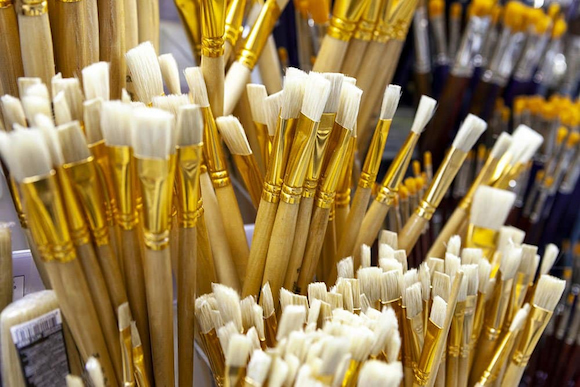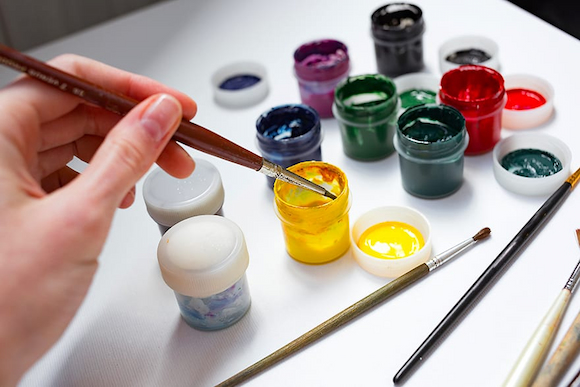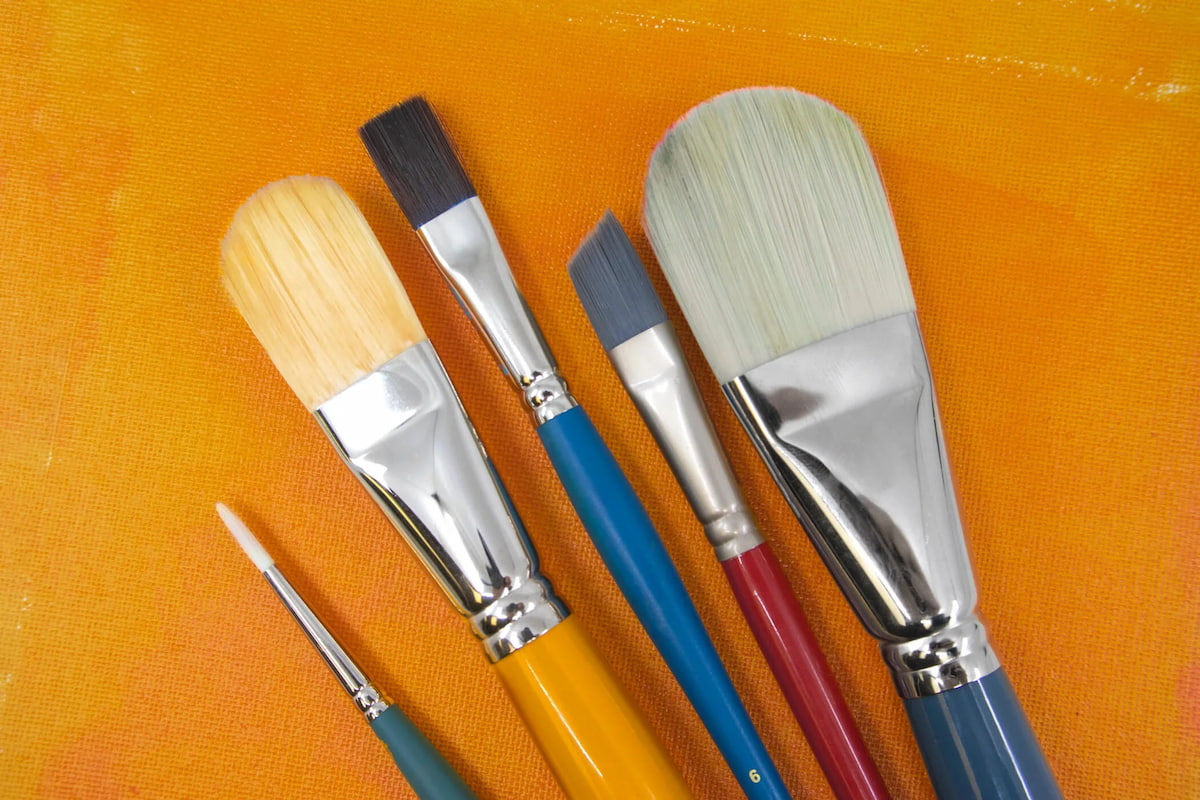Acrylic is a type of paint used by artists that are water-based, quick-drying, solvent-free, and can be applied to a variety of surfaces. Acrylics, when dried, are lightfast and permanent, and their textures become durable and flexible. They are simple to clean with soap and water, making them ideal for beginners. Acrylics make a great match with brushes, rollers, and painting knives as they can be altered in consistency using a range of gels, pastes, and mediums.
Due to its polymer foundation, acrylic paint can be used in thick applications akin to oils; the paints can also be diluted with water or medium and used similarly to watercolours. When combined with gels, pastes, and media, can produce undesirable results with oils or watercolours. In fact, acrylics adapt themselves to a wide variety of art painting techniques that the possibilities are nearly limitless.
Essential Supplies When Painting with Acrylic
Acrylic Brushes
When looking for a good set of acrylic art brushes, your first safe choice is those that are made of synthetic materials such as nylon. This is because they are specifically designed to handle water-based media due to their smooth, flexible bristles and their strong enough to handle the pressure of thicker applications.

Other materials like hog hair, sable, and bristle can work well for acrylic painting too. These versions tend to be a lot more expensive than synthetic ones, but they’re also better suited for specific painting techniques. Given their tough nature, they can be used to create thick, textured strokes with more pressure.
Another point to consider is the shape of the brush. Different shapes suit different painting techniques and the beauty of acrylic paint is that it can be used in a variety of ways. Round and flat brushes are somewhat of a universal tool, whereas filbert and fan brushes can be used for more specific effects.
The tip of each brush should also be looked into as this will be the area used for painting. It’s best to look for a model that has soft, flexible tips to ensure that strokes come out smooth and even. If you’re a beginner, it’s best to start with a few basic shapes and sizes before you invest in more specialised versions.
Pointed models offer a lot in terms of accuracy and detail, while those with a flat edge can be used for wide swaths of colour. Other materials like foam and airbrushes can be used in combination with acrylic paint too, with each one bringing something unique to the table.
Palette
The acrylic painter requires a flat and water-resistant palette. There are acrylic-specific plastic palettes with lids or sealable chambers to avoid drying. Also effective are enamelled butcher trays, thick glass and plastic cutting boards. In a pinch, aluminium pie pans and melamine plates can suffice. Water-absorbing hardwood palettes should be avoided.
Surface
One of the benefits of working with acrylics is that they can be applied to nearly any sturdy, nongreasy surface. Prior to application, water-absorbent surfaces, such as wood, must be sealed. Canvas, hardboard, fibreboard, and heavy watercolour paper that has been primed with a high-quality acrylic dispersion primer are ideal painting surfaces. Using pre-gessoed, pre-stretched canvases saves time, but they are typically not an archival grade.
Tips You Should Try
Use Water (More or Less)
Add more water to acrylic paint to produce thinner layers and dry like watercolour with a matte appearance. You can create shadows and add intriguing textures to your painting by applying a thin coat of paint.

Remember that this approach works best with extremely thick and absorbent paper (like watercolour paper). On gessoed or water-resistant canvas, the thin paint may drip and pool rather than soak, and that’s where less water is needed.
Dab With Stiff Bristles or Paper Towel
Use acrylic art brushes with strong bristles and thick paint to create a haphazard, random texture that is distinct from usual brushstrokes. As you begin to delicately dab the canvas, just the bristle tips will make contact, creating a pattern of organic dots. The more you tap the brush in a certain location, the denser the region will get.
When greater pressure is applied, dabbing produces a significantly larger shape with fewer gaps and contrast. You may make a sandy beach with a round brush and a series of harsher strokes. Consider utilising two tones of the same colour (such as greens for trees, tans for sand, or white/blue for clouds) to create depth in colour. Utilize a paper towel, cloth, or sponge to achieve various textured effects.
Consider Stippling or Repeated Dabbing
The technique of stippling involves painting tiny dots, typically in a variety of hues or colours, to create a fascinating texture that the eye interprets as a solid object from a distance. It is popular for abstract paintings and may also be utilised to give your paintings a realistic touch (more on that in a moment). Simply dip a long, pointed brush into a large glob of paint and poke the canvas with it to make a small dot. Using more pressure or a wider, circular brush will result in larger dots.
Some artists use these dots to indicate that an object is gleaming, glistening, or shimmering. This technique could be used to provide highlights to objects such as waves, waxy food, and glass. Create depth in your starry night sky by utilising a range of dot sizes and hues, such as yellow, grey, light blue, and white.
Experiment with Acrylic Pouring and Dripping
Want your artwork to appear as though it is raining or that something is melting? Try spraying wet paint layers with water to produce drips and splashes and to help the paint flow together. Alternately, add a clear acrylic medium to your paint to make it drip and stream.
Depending on your colour choices and pouring technique, you can also pour paint from varying heights to create kaleidoscopic backdrops or add an eye-catching finish to your abstract painting. Create colour puddles and pools with swirls, waves, splashes, marble-like finishes, and foamy textures.
